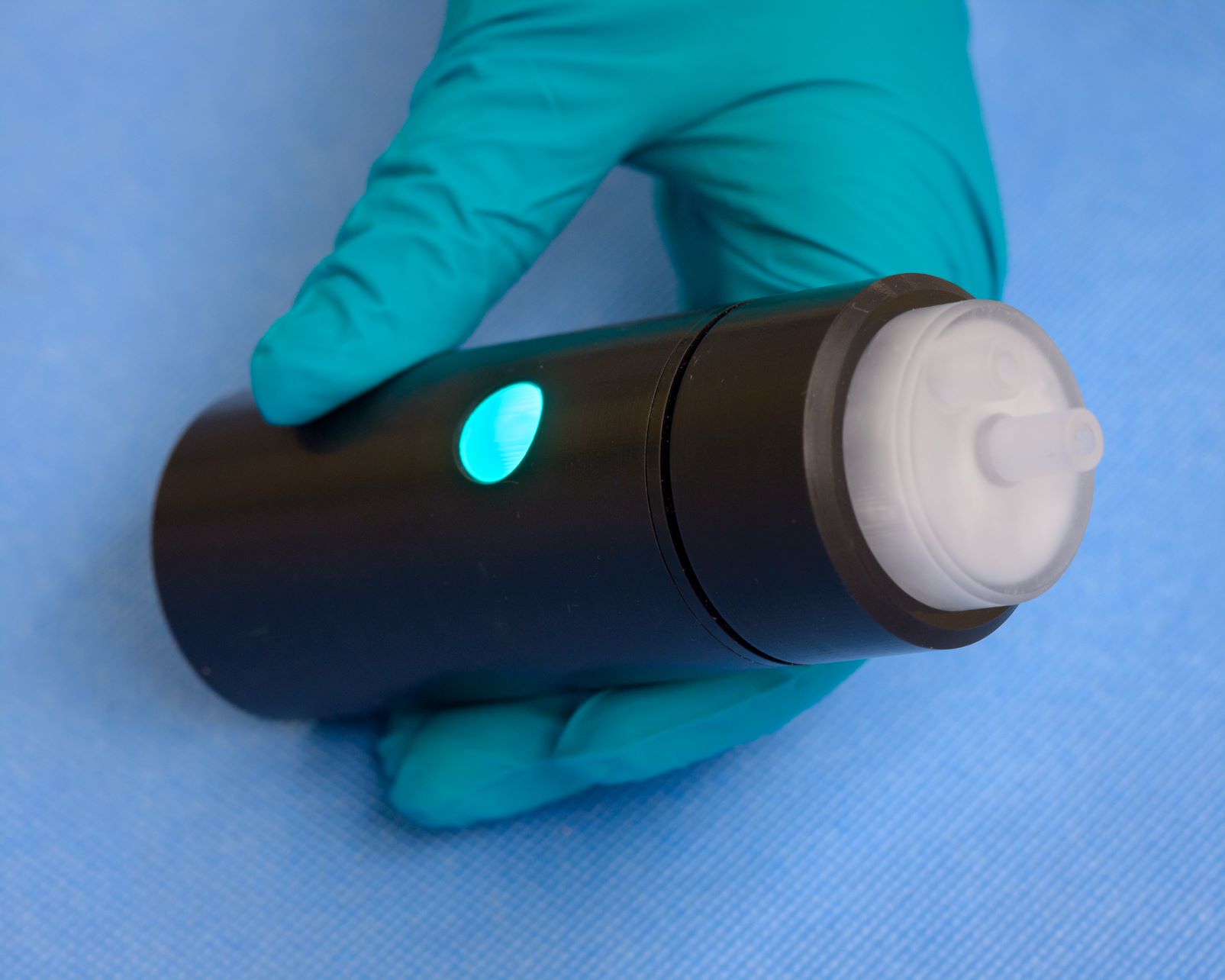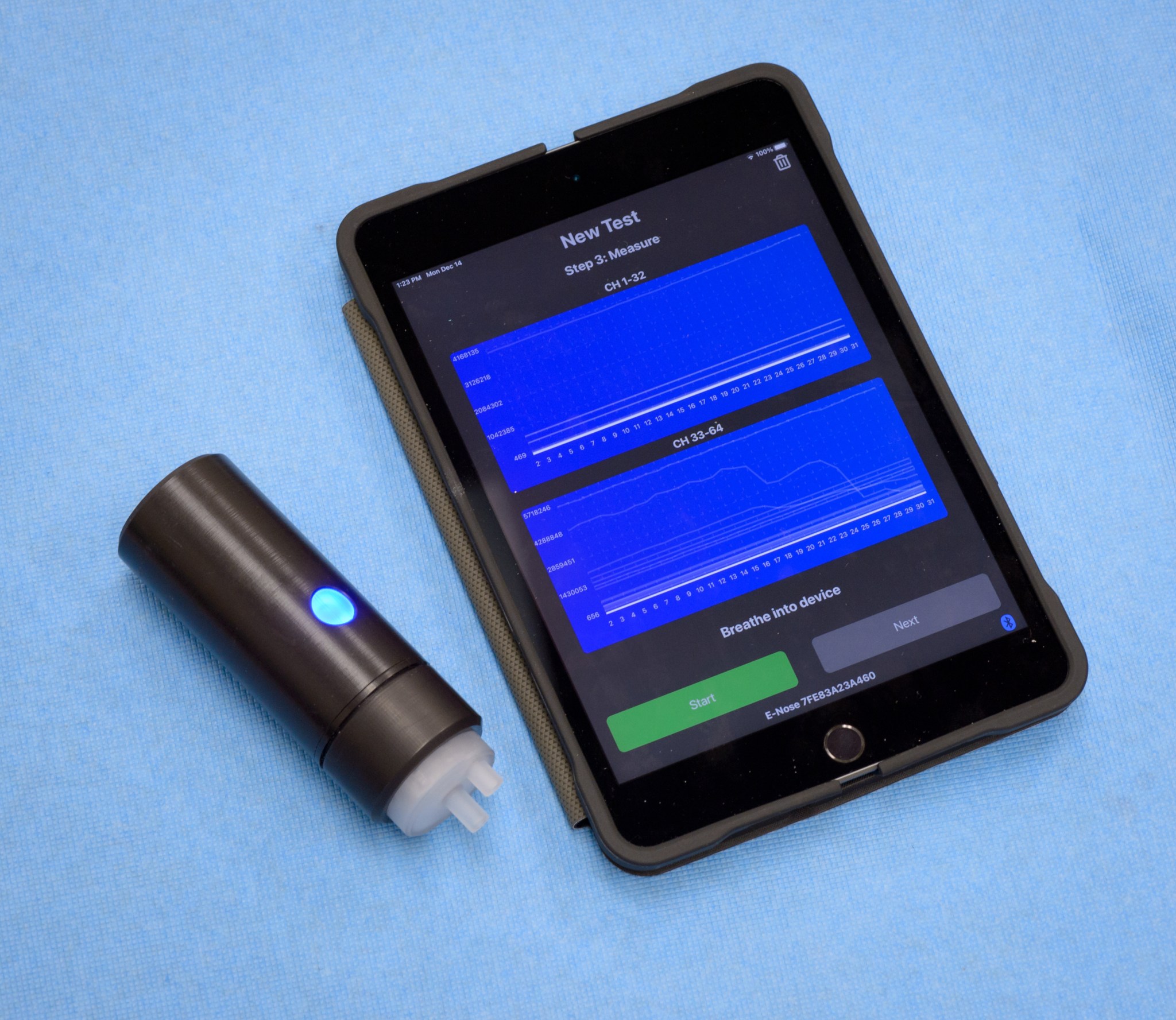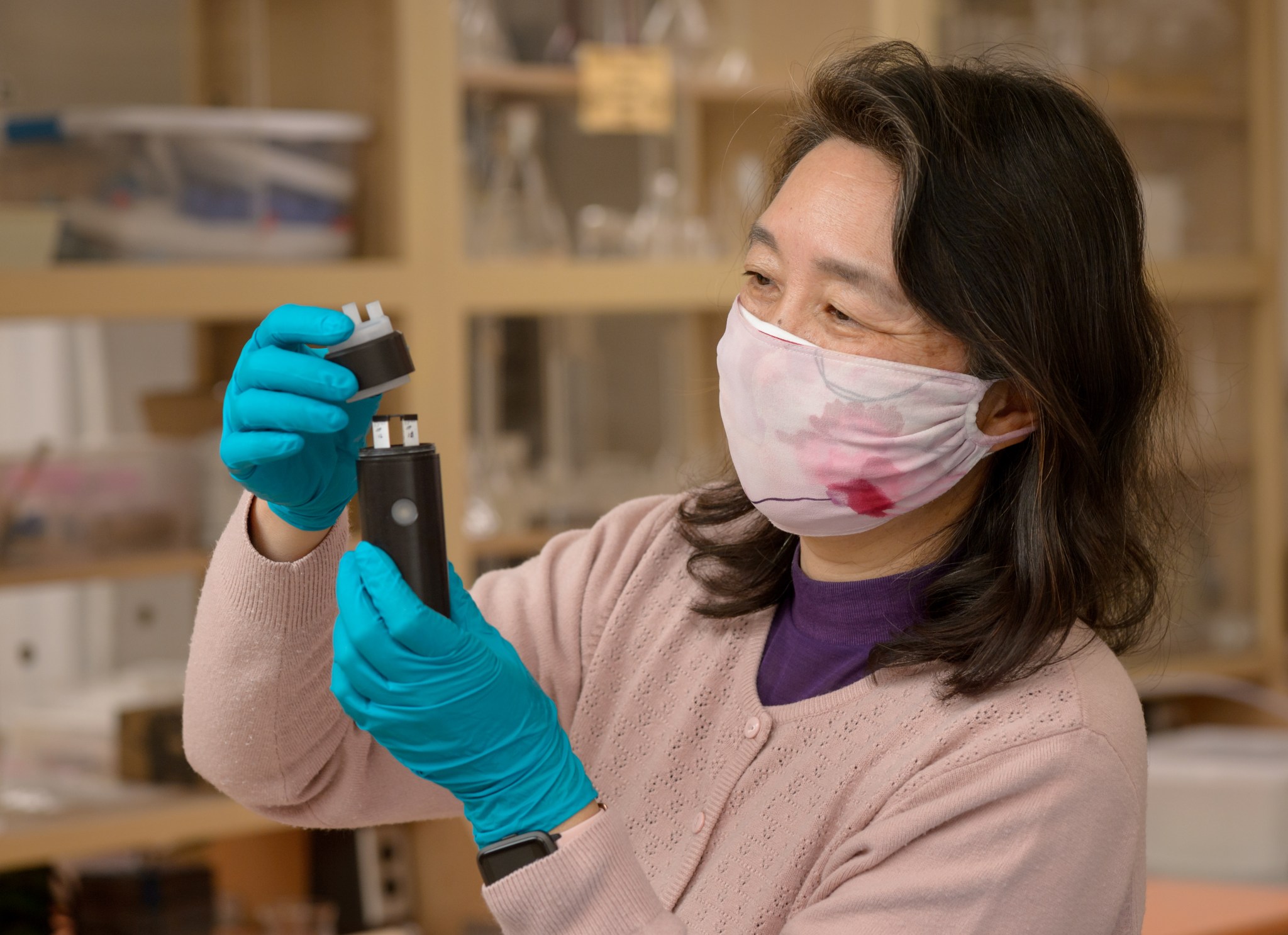The ability to quickly and cost-effectively screen people for COVID-19 is an essential part of addressing the ongoing pandemic, and NASA is leveraging its expertise to assist in tackling the issue head-on. NASA has been funded by the Department of Health and Human Services with $3.8 million to enhance the E-Nose device developed at NASA’s Ames Research Center in California’s Silicon Valley using patented nanosensors and nanosensor array technologies for COVID-19 detection. E-Nose is a smartphone-based device derived from technology used to help monitor air quality inside spacecraft, but NASA is advancing it to detect COVID-19 by “sniffing” a person’s breath. E-Nose could help mitigate community spread of the virus in a manner similar to how temperature checks are used to screen individuals before entering shared indoor spaces, such as a local grocery store or restaurant.
“We’ve been working on E-Nose and these nanosensor technologies for the last 19 years, targeting trace chemical detection for space applications, and have repurposed this technology to address the COVID-19 pandemic,” said Jing Li, the inventor of E-Nose. “The portability, low cost, and non-invasive nature of the device makes it perfect for on-the-spot community screening.”
This application of E-Nose will work by measuring volatile organic compounds, the gases produced from an infection from a virus like SARS-CoV-2, which causes the COVID-19 disease, in a person’s breath with an array of sensors that mimic the human nose. Recent studies show there are changes in the volatile organic, or VOC, breath profile due to the COVID-19 infection. Researchers at Johns Hopkins University and Lawrence Livermore National Lab are working on identifying the specific VOCs in the breath of COVID-19 patients, using them as biosignatures for the virus. This research will help to develop the breath profile of patients needed in to modify the sensors in E-Nose to detect COVID-19.
The Ames team is fine-tuning the sensors for detecting the target VOCs in human breath with initial field test planned in early spring 2021. This latest prototype, built by NASA subcontractor Variable, Inc., includes Bluetooth capabilities and a smartphone app that processes, displays, and transmits sensor data. The sensor array chips are swappable, and therefore can be updated with improved sensors as more is discovered about SARS-CoV-2’s VOCs. E-Nose will be ready to move into production for clinical trials after a field test specifically for its COVID-19 version.
“Once the clinical trials are completed and the sensitivity and specificity are demonstrated, E-Nose can be deployed in factories, airports, grocery stores, and businesses of all sorts to rapidly screen for active infections,” said Li. “It’s a non-invasive and rapid way to keep our communities safe as this pandemic continues.”
By analyzing the E-Nose data along with body temperature and other non-invasive symptoms, NASA’s expertise in advanced machine learning methods will allow for more accurate on-the-spot answers. That immediate data transfer would allow for a network of E-Nose devices to be used to inform real-time decisions related to public health. A machine learning algorithm is currently in development to enable this kind of “smart” COVID-19 identification.
“In future, E-Nose can be used as a platform for other medical conditions as well as meeting its original goal of monitoring astronaut health and crew cabin air quality,” said Rupak Biswas, Director of the Exploration Technology Directorate at Ames. “With the potential for other applications in the space and Earth sciences, E-Nose is a non-invasive, rapid technology solution that can meet the current COVID-19 crisis and support NASA’s future exploration and research.”
E-Nose is supported through funding from NASA through the Department of Health and Human Services.
For news media:
Members of the news media interested in covering this topic should reach out to the NASA Ames newsroom.
Author: Frank Tavares, NASA’s Ames Research Center





























